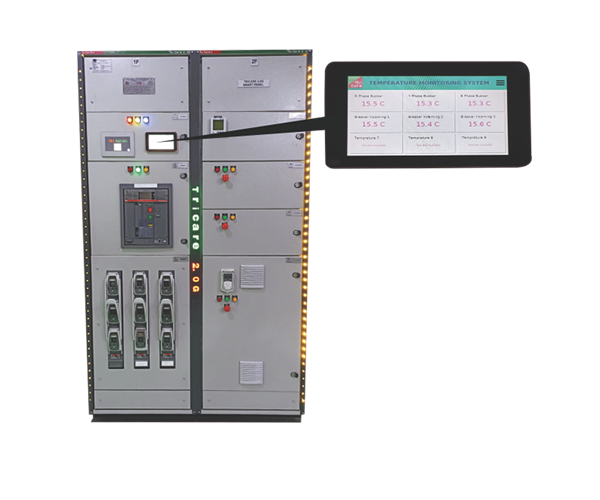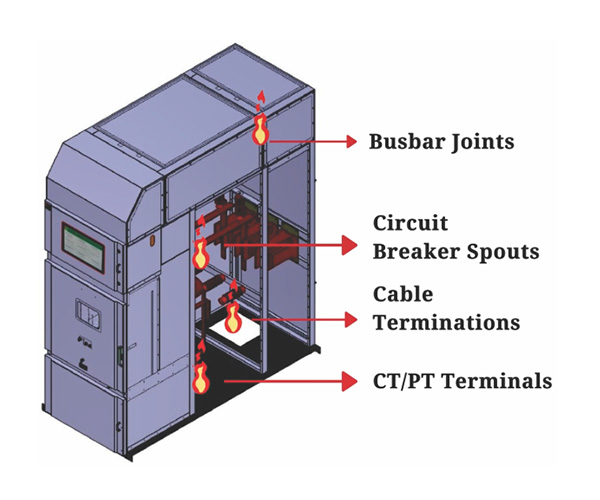- 7″ Touch Screen Display
- 9 Points on single screen
- Real Time Temperature Monitoring
- Temperature Range upto 200DegC
- Acuracy 1°C
- SMS Notication on threshold violation.
- Upto 5 Mobile Nos. can be added.
- Customizable data point names.
- Modbus and Ethernet Compatible
- Wi Enabled for Internet Connection
Features:
Requirement of Thermal Condition Monitoring
Over time, switchgear contacts, bus bars, and other connection points develop hot spots that slowly corrode causing increased electrical resistance which in turn, heats up the conductor.
Overheating caused by overloaded circuits, unbalanced loads, or loose or damaged connections shortens the equipment life, and may lead to failure.

Temperature rises in medium-voltage switchgear and switchboard components can be sudden, resulting in burning, melting or destruction of components. Periodic visual inspections are costly, require special safety considerations & are unlikely to detect these conditions in time.
The Demand
Now the demand is for 24×7 thermal monitoring of switchgear assets, catching up to 70% more failures than periodic inspection, thereby protecting valuable equipment from failure and increasing personnel safety.
Many Distribution companies routinely monitor switchgear temperature to optimize maintenance schedules and extend equipment lifetime
Utility companies around the world are implementing fiber optic sensors for temperature monitoring of medium and high-voltage switchgear. The device provides real-time temperature data, which helps to maximize load efficiency and prevent failures.
Why Fiber Optic Sensors?
Fiber optic temperature sensors do not suffer any of the technical challenges associated with wireless and infrared thermometers.
Fiber optic sensors can be routed directly to critical switchgear monitoring points and are completely immunetoelectromagnetic interference and noise bursts caused by high voltage switching.

